Note to My Younger Self: Moto Tips for the Novice
Learn how to do pre- and post-ride inspections of your bike, looking for things like loose bolts, underinflated or worn tires, worn sprockets, loose chains, oil leaks, spongey brakes, frayed clutch cables, and any lights that may not be functioning. I can't say it enough -- know your bike well enough to spot problems that need to be addressed.
I’m celebrating 36 years of motorcycling this year, and after talking with several new riders in the community recently, I’ve been thinking a lot about what my present day self would have said to my former university persona regarding that first plunge into the world of two wheels.
I learned some tough lessons those first few years, despite taking a safety course. Being hit by a half-ton truck at an intersection while turning left on an amber light certainly makes you reflect ... blackouts, a broken wrist, a cracked helmet, and a visit to the emergency room aside.
But sometimes, only direct experience makes you listen in your late teens / early 20s, when you think you're invincible, and that speed is your friend.
So here it goes … my selection of Riding Hints and Tips for the Beginner:
Cutting through the cones — Adobe Stock
Take a State Approved (or in my case, provincially-approved) Motorcycle Safety Course. Not only will it quicken the licensing process, these courses give the novice rider the necessary skills to avoid and react to potentially harmful traffic situations. Knowledge is power.
1) The first piece of advice, one I took myself, is Take a State Approved (or in my case, provincially-approved) Motorcycle Safety Course. Not only will it quicken the licensing process, these courses give the novice rider the necessary skills to avoid and react to potentially harmful traffic situations. Knowledge is power.
The Skills You'll Learn (in no particular order)
- Emergency Braking and Avoidance: How to stop in the quickest possible way while keeping the bike up. Or alternatively, how to react to fallen objects in your way by turning quickly to avoid them. For this, intense practice on a course makes the maneuvers an automatic response, helping you to assess and react without thinking in street situations. You learn that on most modern bikes 90% of the braking power comes from the front brakes; the best method to not lock up your brakes during an emergency stop (for older bikes without ABS); and even how to use down shifting to slow yourself as you’re coming to a stop.
- Awareness on the Road of Potential Threats: Keeping your eyes on the road ahead and unconsciously scanning from side to side for potential dangers, such as cars opening doors from the parking lane, cars changing lanes without checking, or drivers turning in front of you without making eye contact. Even shoulder checks before you change lanes are advisable … a turn signal is not enough to guarantee you’ve been noticed.
- Maneuvering Your Bike at Various Speeds: Knowing how the bike feels and handles both in start-and-stop city situations and at highway speeds, where counter steering comes into play (turning into a curve actually has you steering in a counter-intuitive manner i.e.: turning the handlebars and pointing the wheel right when you want to turn left). And always looking where you want to go while on the bike … hence, when you are turning into a curve look to the exit point and beyond.
- Even something as simple as Choosing the ‘Right’ First Bike for you, based on your size, skill level, most comfortable riding position, etc. This was an interesting scenario for me. My first bike was a 400 cc Yamaha SECA converted to look like a café racer and the two-stroke RD 350 I really wanted, complete with drop down handlebars, repositioned pegs and sports-oriented slicks. I found out quickly while training on a bike with upright handlebars, that my body reacted far better to emergency stops and quick maneuvers on a bike with drop down handlebars. Throttle and handbrake control were less controlled on a cruiser for me. Everyone is different, of course. But trying different bikes out in a training situation will reveal your best ride.
2) Always Wear Moto-Designed Gear: Leathers, or abrasion-resistant materials with body armor, as well as a full-face DOT (or better) approved helmet, boots covering the ankles, and gloves that protect your wrists. This one becomes readily apparent once you're in an accident. My aforementioned collision with a half-ton truck left me with road abrasions all over, despite wearing the appropriate gear. My full-face helmet bore deep scars across its carbon fiber face where my body and bike slid to a stop. Makes you think, ‘what if?’ Some are not so lucky, requiring large skin grafts or worse. Wear the gear. It’s really just common sense.
3) An Ounce of Prevention is Worth a Pound of Cure: Learn how to do pre- and post-ride inspections of your bike, looking for things like loose bolts, underinflated or worn tires, worn sprockets, loose chains, oil leaks, spongey brakes, frayed clutch cables, and any lights that may not be functioning. I can't say it enough -- know your bike well enough to spot problems that need to be addressed. Whether you have an interest in being self-sufficient and fixing these issues yourself, or it’s just a nudge to take your bike in for servicing … this skill is essential to having a long and safe riding experience in life.
Negotiating traffic — Adobe Stock
Continue Your Education for as long as you’re riding, whether it is emulating and learning from more experienced motorcyclists on rides, or taking more advanced courses, such as track days, which train you with a skill set that is applicable both on and off the track.
4) Awareness of Your Surroundings is a must on two wheels.
- While stopped at intersections, always wait a couple seconds before moving forward to make sure the intersection is clear and that no one is going to run a red light. My experience thus far in Brooklyn is to just expect people will go through reds, even police cars with no lights on. Two seconds will save your life. Being ‘in the right’ means nothing if you are making your case from a hospital bed.
- When stopped and waiting to turn left, never assume oncoming traffic sees you. Waiting, even if the light has changed to amber can help you avoid an accident.
- When you expect to stop, or if you are riding through narrow roads with parked cars at the side, cover your brake. If someone opens a car door into your path, you are already halfway to fully pressing the brakes. Milliseconds count.
- Flipping this idea on its backside … making other drivers aware of you is an equally essential skill. So, when you are coming to a stop, flick the brake lever to flash your brake light and warn the cars behind you, who have much longer braking distances in emergency situations. There are even aftermarket parts that can perform this function for you once a slowdown is initiated.
When you are stopped put your foot on the back brake to keep the brake light engaged and the clutch pulled in so you can stay in first gear. If you need to move quickly out of a situation, you can. And finally, when you are stopped, even your position in the road can aid in a quick escape from danger. Never stop directly behind a car. Rather, position yourself to one side with access to the space between lanes so you can move quickly if you notice in your mirrors that the car behind you is not slowing down quick enough. Same goes while you are moving with traffic … own your space and keep exit avenues available at all times, don’t ride in car’s or truck’s blind spots, and don’t tailgate. Be seen.
5) Continue Your Education for as long as you’re riding, whether it is emulating and learning from more experienced motorcyclists on rides, or taking more advanced courses, such as track days, which train you with a skill set that is applicable both on and off the track. Training keeps your reflexes quick and makes the ride all the more enjoyable.
6) Finally, don’t make your motorcycle your primary mode of transport … statistics continent wide have shown full-time riders, particularly those who are new to two wheels, have a 100% chance of being in an accident, either through their own inexperience or due to negligent drivers who were not paying attention. Add in weather, poor road conditions, daily rushed travel and a lack of concentration … and the statistics become daunting.
In no way, shape or form is any of this advice geared toward stopping you from riding. For me, motorcycling has always been therapy, from when I was a new university student fighting through the weekly mélange of classes five days a week and full-time work in a restaurant to pay for that privilege, to now as an adult dealing with the day to day trials of work and life in general.
It's simply my hope to keep my friends, colleagues, and readers safe, "rubber side up" as they say — and enjoying the two-wheeled lifestyle to its fullest.
One last thought: if any of you have any advice you’d like to add to this feature, please feel free to submit your comments using the form below. We’ll keep this as a living document on motorcycle safety.
Gear Up. Ride Safe.
Looking back — Mark Squitieri

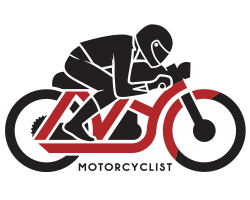

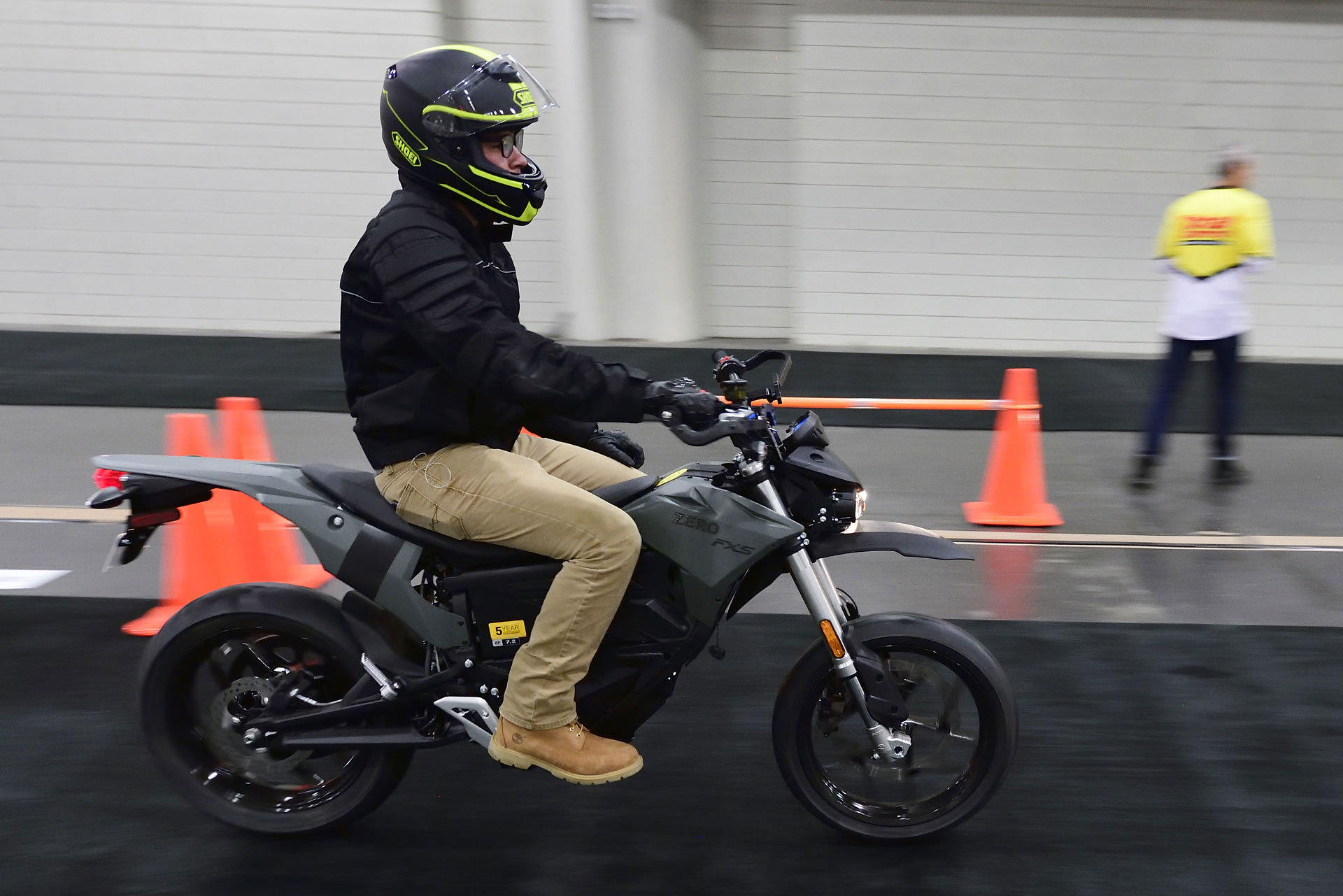
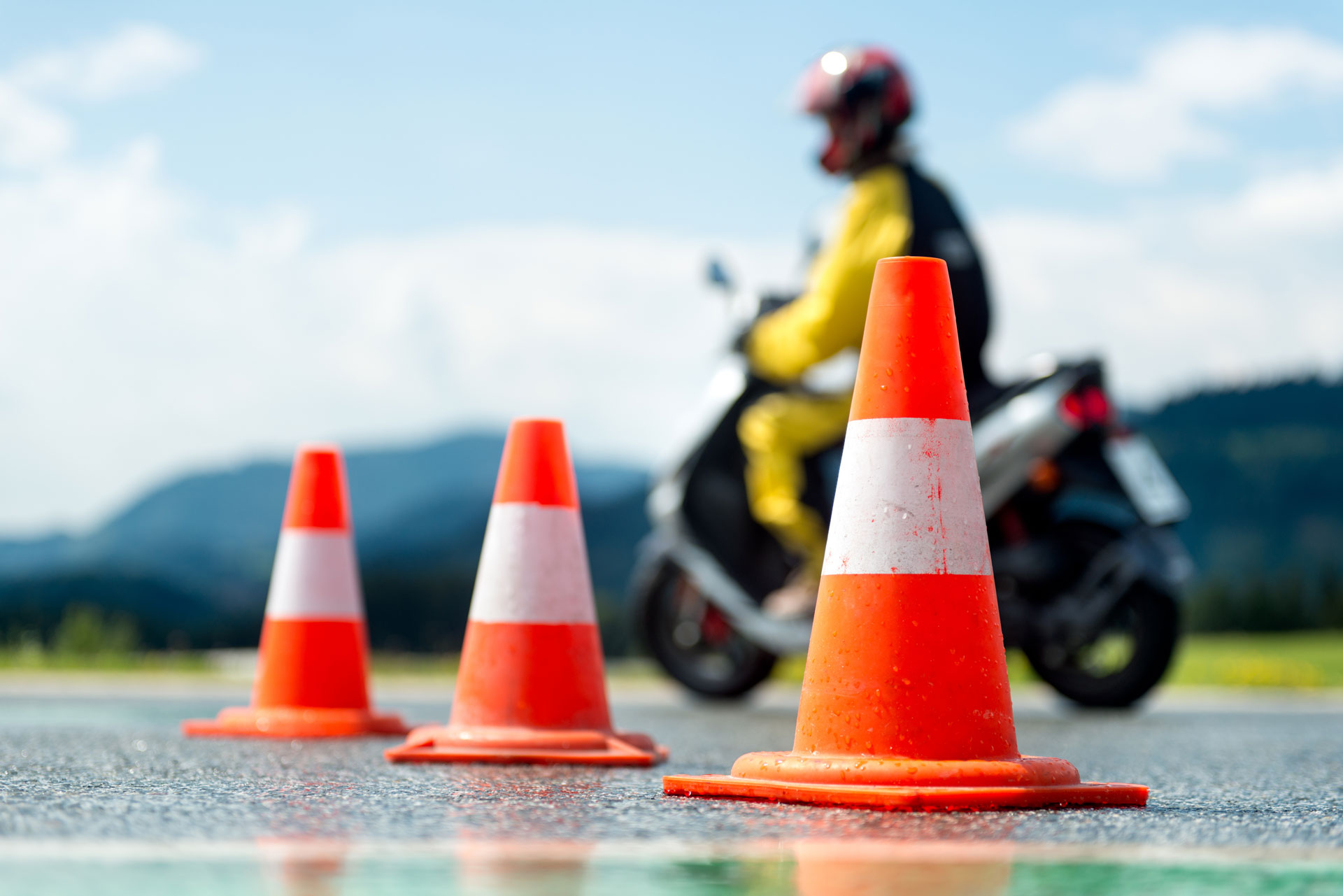
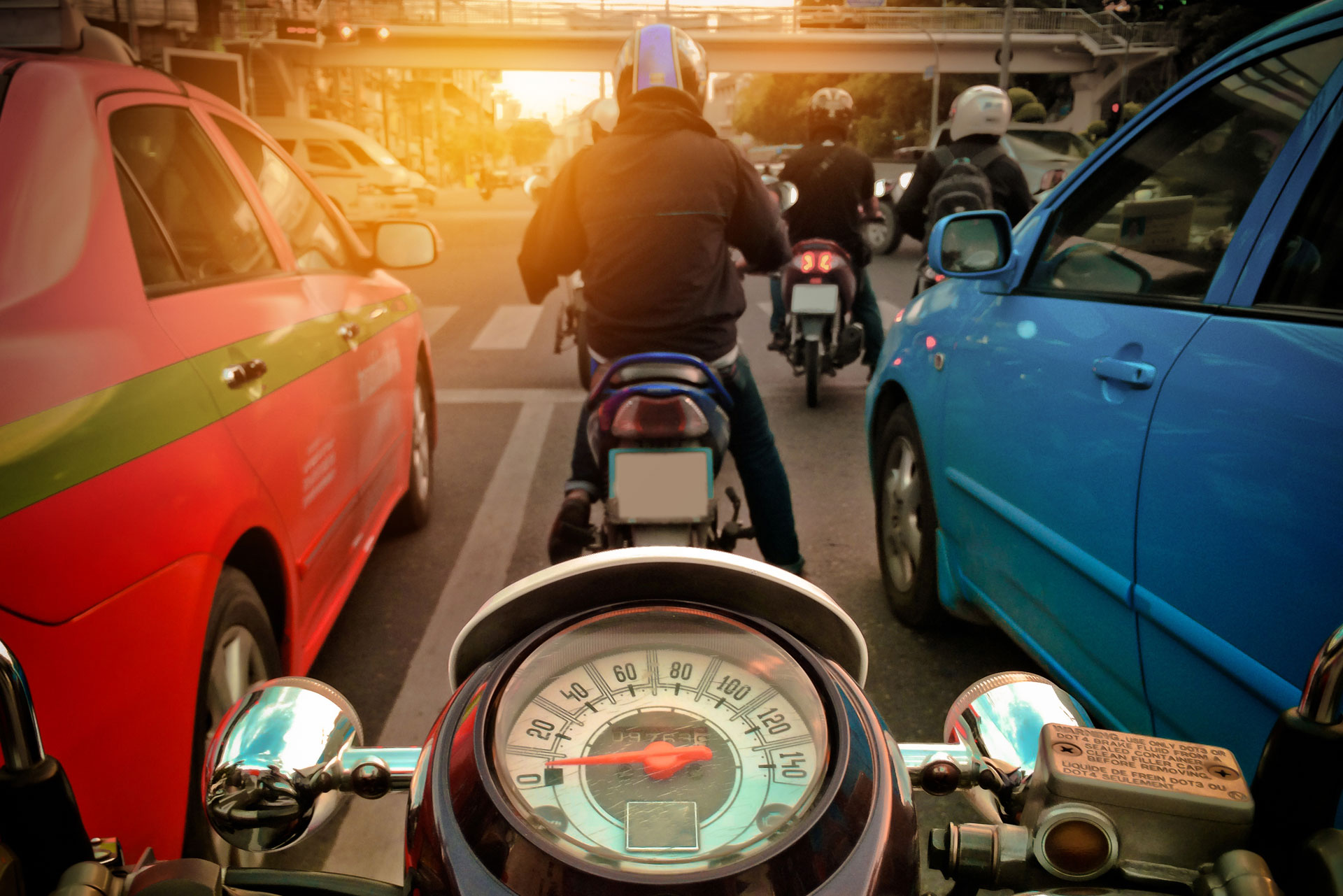
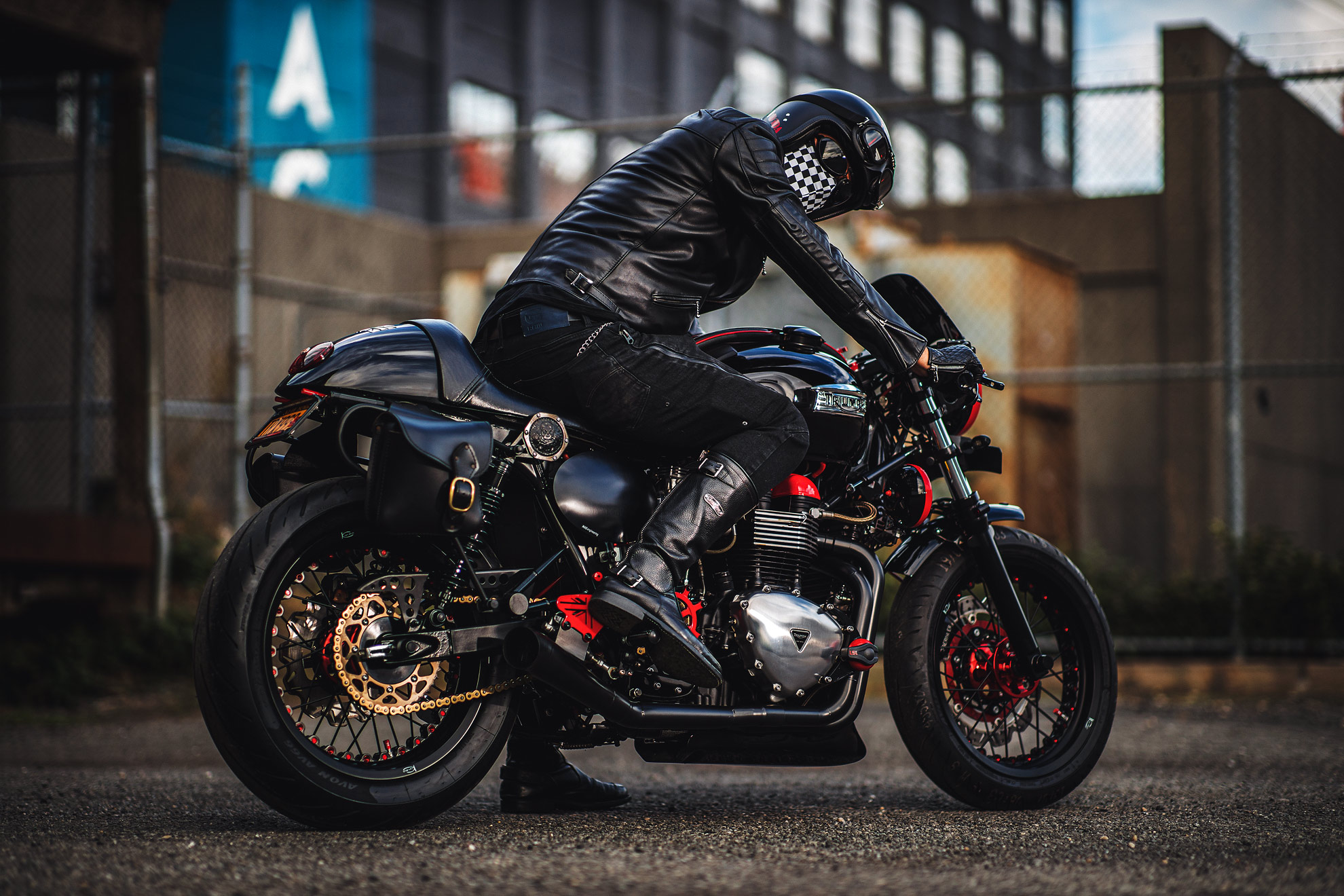


7) With the plethora of road hazards on NYC streets ... potholes, sunken manhole covers, debris on the road, badly filled cracks in the tarmac ... avoidance is the key when you’re on two wheels. Keeping your vision several car lengths ahead of your riding position will give you time to react. Never stare at a road hazard as your bike will follow where you look. Instead, a fleeting glance to identify the issue and then looking to where you will go to avoid the hazard, and the route beyond, will get you safely through. One added note: do not ride behind trucks or vans that obscure you view for prolonged periods, as they will stop you from seeing hazards in the road.
Rahoul as a newly minted rider in NYC (me), would you be interested in any contribution articles?
Hi Louis ... we do not accept pre-written articles ... however we do encourage contributors to contact us with ideas for stories. So definitely contact us at rahoul@nycmotorcyclist.com. We do have several regular contributors.
Great Read
Great article Rahoul
I tell all young riders, "If you catch yourself racing, stop".